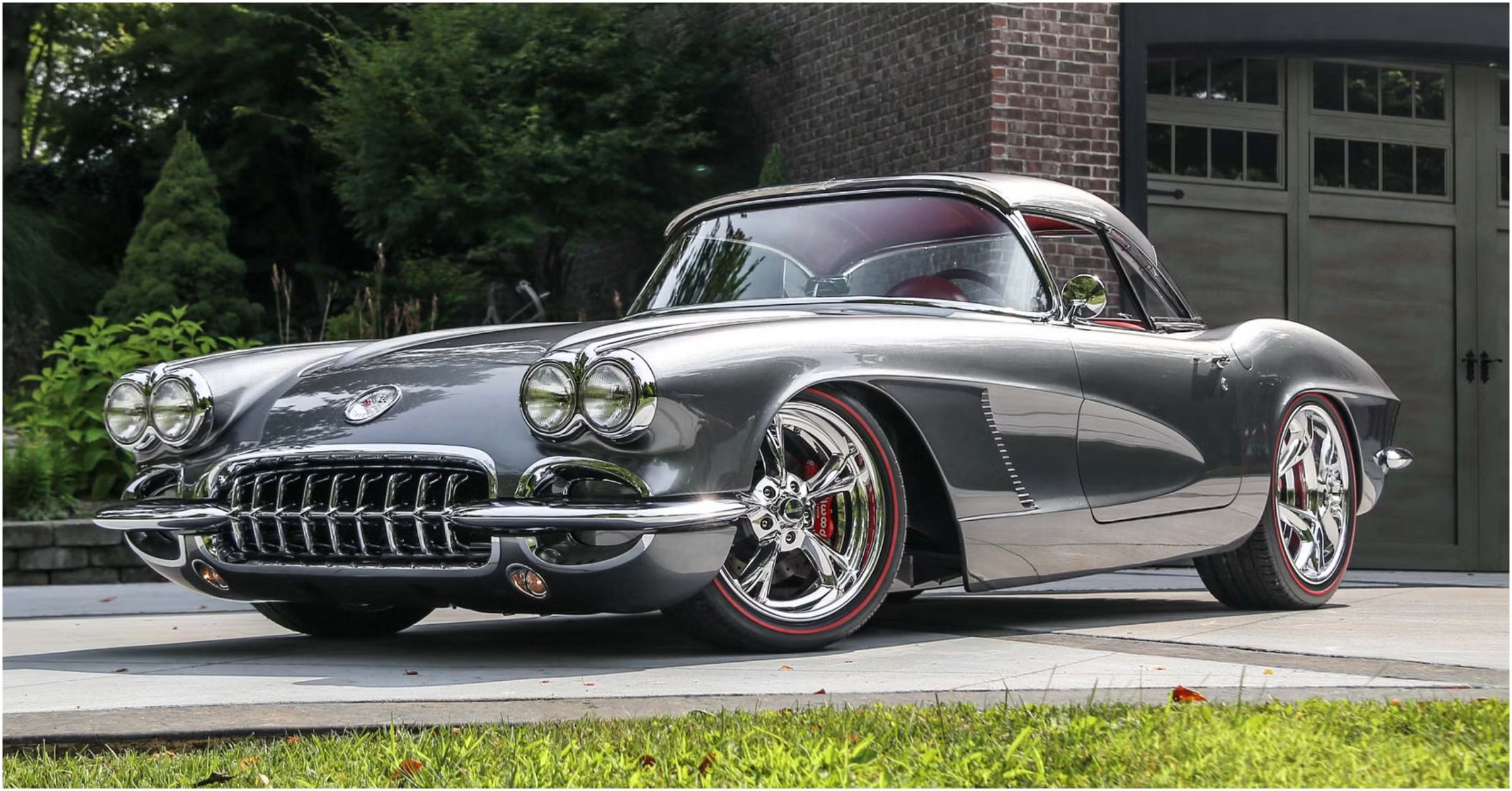
Classic cars elicit a certain indisputable sense of nostalgia and charm, transporting us back to an era when simplicity and durability were of paramount importance in automotive design. These were not merely vehicles; they were machines constructed with distinct character, embodying a time when every feature, ranging from the subtle curve of a tailfin to the satisfying click of a manual window crank, was meticulously crafted with a clear purpose and intended for longevity. Unlike today’s rapidly evolving products, which are often designed with planned obsolescence in mind, classic cars possess a timeless allure and unique functionalities that have truly withstood the test of time.
Many of these once – novel features, however, have become rare relics or have simply faded into oblivion over the years. The inexorable march of technological progress, combined with shifting design preferences, economic factors, and increasingly stringent safety standards, has gradually phased out many beloved elements that once defined the driving experience. Yet, appreciating their ingenious design provides a fascinating insight into how far automotive engineering has advanced and how it continues to transform, leaving these iconic features in its wake.
Join us as we embark on a captivating journey back in time to explore 14 classic car features that, for various reasons, are likely gone forever. In this first installment of our exploration, we will uncover seven of these amazing yet forgotten innovations, delving into their original appeal, the ingenious thinking behind their creation, and the forces that ultimately led to their disappearance from the modern automotive landscape. Prepare to rediscover the tactile pleasures and practical solutions that once made driving an even more engaging and multi – sensory adventure.
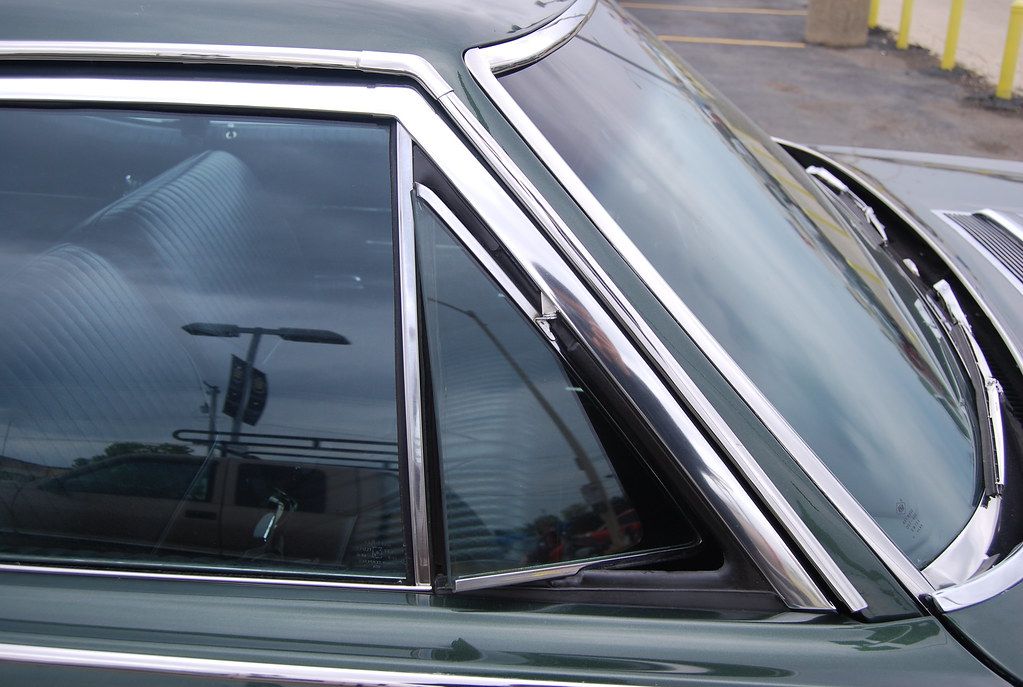
1. **Vent Windows** There exists a unique sense of freedom that accompanies one on the open road, with the windows rolled down and the wind rushing through the car. In classic cars, this liberating experience was enhanced by the ingenious design of vent windows, often referred to as “wing windows.” These small, triangular glass panes were cleverly mounted on hinges, enabling drivers to effortlessly rotate them inward to capture the wind and direct it precisely to the desired location. This vintage “natural air – conditioning” system offered unparalleled control over the volume and direction of fresh air, allowing one to channel a pleasant breeze exactly where it was needed without excessively disheveling one’s hair.
These practical and enjoyable additions enjoyed immense popularity throughout the 1960s and 1970s. However, as the 1980s arrived, more powerful and comprehensive air – conditioning systems became standard equipment and were widely accessible. The necessity for these separate, smaller windows diminished, ultimately resulting in their complete elimination. It is truly one of those ingenious old – car features that one rarely, if ever, encounters anymore, a testament to the simpler yet highly effective climate control of a bygone era.
Read more about: Over 78,000 Jeep Wranglers Recalled: What Owners Need to Know About the Latest Safety Alert
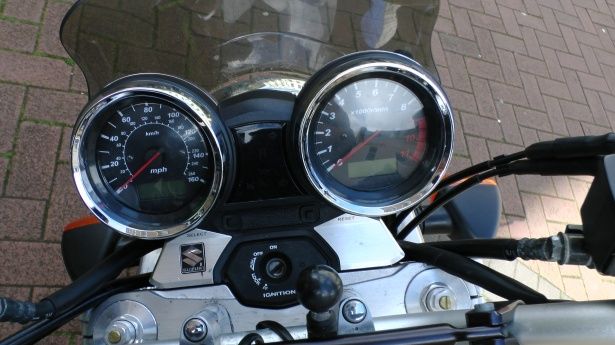
2. **Rolling Drum Odometers** If one were ever to stroll through a used – car lot in bygone days, one would likely come across the captivating sight of a rolling – drum, or mechanical, odometer. This elaborate device was visible through a small window on the dashboard and often served as a focal point, as buyers sought cars with high mileage figures. These odometers consisted of small wheels or drums, each printed with digits ranging from zero to nine. As the car moved, the rotation of the wheels engaged gears, which in turn sequentially rotated the digits to display the vehicle’s total accumulated mileage. Witnessing the odometer roll over from 99,999 to 100,000 miles was a profoundly gratifying milestone worthy of celebration.
However, these mechanical wonders were prone to errors resulting from wear and tear; misalignment could lead to inaccurate readings. More alarmingly, they were vulnerable to odometer fraud, in which the numbers could be rolled back to falsely indicate lower mileage. These issues, combined with the industry’s shift toward more precise and reliable digital odometers that are prevalent today, ultimately determined the fate of the classic rolling – drum odometer. Despite their obsolescence, they continue to evoke a strong sense of nostalgia among devoted classic – car enthusiasts who appreciate their unique charm.
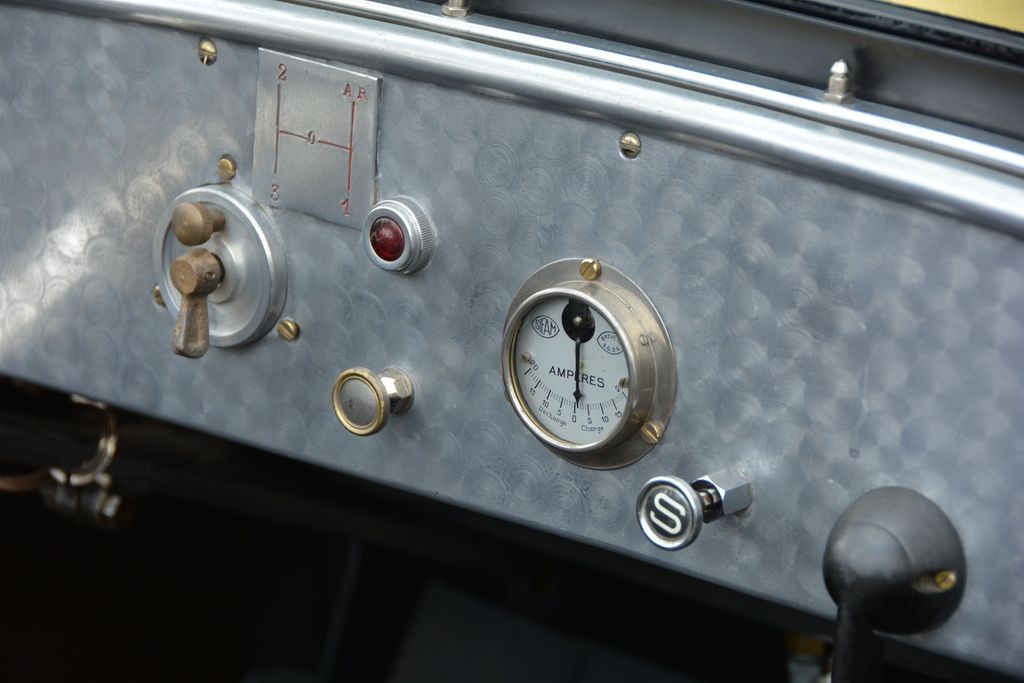
3. **Metal Dashboards** When one envisions classic cars, rugged and straightforward designs, along with an abundance of metal, often come to mind. In the early days of automotive manufacturing, dashboards were predominantly crafted from robust materials such as steel or aluminum—a choice that is almost unimaginable today in light of modern safety regulations. These early metal dashboards exuded a raw, industrial charm, contrasting sharply with today’s counterparts made of soft plastic or vinyl. They were equipped with a tactile array of knobs and switches, providing direct, mechanical control over lights, wipers, and ventilation, while analog gauges offered a visceral sense of the car’s operational status.
Automakers made a crucial shift to softer and more forgiving materials mainly because metal dashboards did not interact well with human bodies during accidents. Beyond safety considerations, metal dashboards were impractical, absorbing significant amounts of heat in summer and becoming icy cold in winter. The need for better insulation, as well as reduced vibrations and noise, also played significant roles in prioritizing comfort and quietness in modern cars. Thus, although once ubiquitous, the pursuit of improved safety, superior comfort, and continuous technological advancements ultimately led to their well – deserved phase – out.
Read more about: 15 Untamed 1970s Muscle Cars That Would Leave Today’s Drivers Absolutely Speechless

4. **Ashtrays and Lighters** In an era when smoking constituted an almost universally acknowledged social practice, it comes as no surprise that ashtrays and cigarette lighters were as standard and ubiquitous as cupholders in classic cars. Integrated into the dashboard console, a lighter plug would heat its coils with a simple push, thereby providing an immediate flame. Ashtrays were strategically installed in various interior locations, commonly situated within the dashboard, molded into the back of the front seat, or integrated into the door panels, making them readily accessible to all occupants.
However, commencing in the early 1990s, a significant shift in public health consciousness began to emerge. Health organizations expressed concerns regarding smoking and secondhand smoke, which prompted the enactment of new laws and regulations restricting smoking in enclosed spaces, including cars. Consequently, automakers gradually phased out cigarette lighters and ashtrays. Modern cars have repurposed these spaces for 12V power outlets, which are ideal for charging devices, along with versatile cupholders, additional storage compartments, and even wireless charging pads for smartphones, perfectly mirroring contemporary lifestyles.

5. **Analog Clocks** The transition from the analog to the digital era inherently signified that certain classic features were primed for transformation, and vehicle clocks were among the initial ones to experience this metamorphosis. Once a standard component, analog clocks elegantly embellished a car’s dashboard, imparting understated elegance and practical functionality. These timepieces, characterized by familiar hour and minute hands, could be located in various positions, contributing to a remarkably classic charm and unique aesthetic allure within the car’s interior, rendering any vehicle considerably more refined.
As technology progressed, cars commenced featuring increasingly futuristic dashboards, where digital displays, expansive screens, and integrated navigation systems dominated the center consoles. This evolution consigned the simple analog clock to a relic of the past in most mainstream vehicles. While a select few luxury car manufacturers, such as Maserati, Lexus, and Mercedes, still incorporate analog clocks, they are now perceived less as functional essentials and more as exclusive statement items—symbols of bespoke luxury and a tribute to heritage. They evoke memories of an era when craftsmanship was held in high esteem.
Read more about: Beyond Geneva: Exploring Shinola’s Rise and Other Must-See Timepieces Making Waves
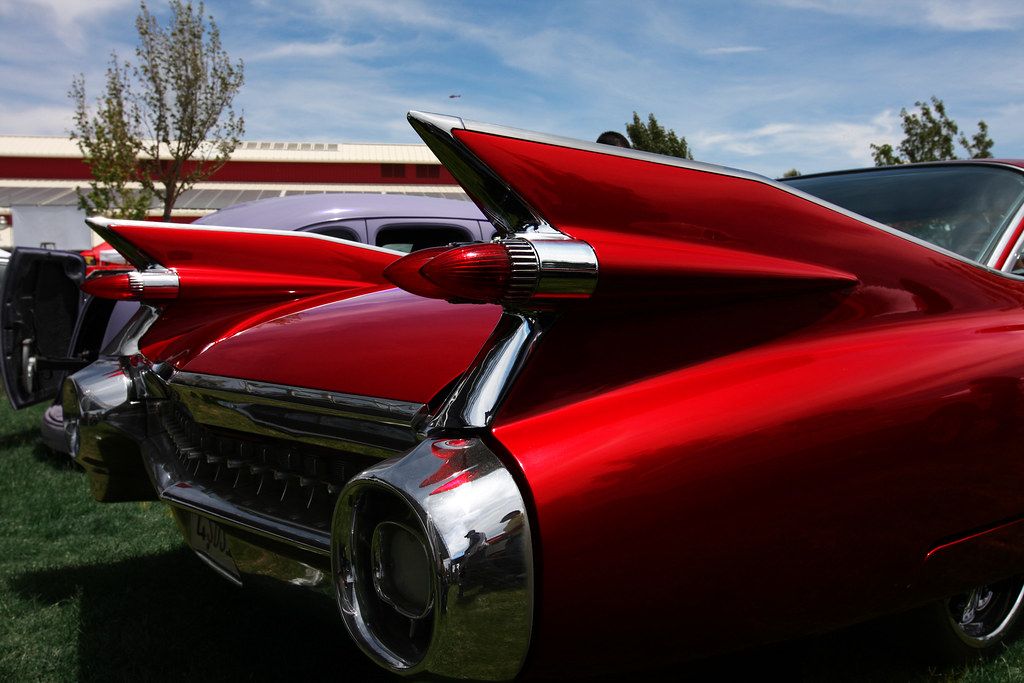
6. **Tailfins** Perhaps no singular design element epitomizes the audacious spirit of mid – 20th – century American automotive design as distinctly as the iconic tailfins. These daring and utterly captivating features, prominently positioned on the rear of classic cars, surged in popularity amid the fervent enthusiasm of the Space Race era in the 1950s and 1960s. The origin is frequently traced back to Franklin Quick Hershey, GM’s chief of Special Car Design, who introduced smaller fins on the 1948 Cadillac, drawing inspiration from the twin rudders of the formidable P – 38 aircraft.
As tailfins gained increasing popularity, manufacturers enthusiastically incorporated larger and more exaggerated versions. Mirroring the aviation industry’s transition to jet power, cars adopted designs resembling those of jet fighter and space rocket tailfins, becoming potent symbols of progress and speed. Beyond mere showmanship, tailfins were claimed to enhance stability, improve aerodynamics, and reduce the need for steering correction in crosswinds. Taillights were often ingeniously integrated, thereby increasing visibility. Yet, as is the case with all fashions, tastes shifted; the grand tailfin gradually fell out of favor, making way for minimalism, sleeker lines, and understated design philosophies in the automotive realm.
Car Model Information: 2020 Lincoln Aviator Reserve AWD
Name: Cadillac
FormerNames: Cadillac Automobile Company
Logo: Cadillac logo BW.svg
LogoSize: 200
Type: privately held company,division (business)
Fate: General Motors
Industry: automotive industry
Predecessor: Henry Ford Company
Foundation: Detroit
Founder: William Murphy,Lemuel Bowen,Henry M. Leland
LocationCity: Detroit, Michigan
LocationCountry: U.S.
AreaServed: United States, Canada, Mexico, Costa Rica, Panama, Europe (excl. Russia and Belarus), Middle East (excl. Iran and Syria), China (excl. Hong Kong and Macau), South Korea, Japan
KeyPeople: Steve Carlisle, President, Cadillac
Products: Luxury vehicles
Parent: General Motors
Homepage: https://www.cadillac.com/|cadillac.com
Categories: 1900s cars, 1902 establishments in Michigan, 1910s cars, 1920s cars, 1930s cars
Summary: Cadillac Motor Car Division, or simply Cadillac (), is the luxury vehicle division of the American automobile manufacturer General Motors (GM). Its major markets are the United States, Canada and China; Cadillac models are distributed in 34 additional markets worldwide. Historically, Cadillac automobiles were at the top of the luxury field within the United States, but have been outsold by European luxury brands including BMW and Mercedes since the 2000s. In 2019, Cadillac sold 390,458 vehicles worldwide, a record for the brand.
Cadillac, founded in 1902, is among the first automotive brands in the world, fourth in the United States only to Autocar Company (1897) and fellow GM marques Oldsmobile (1897) and Buick (1899). It was named after Antoine de la Mothe Cadillac (1658–1730), who founded Detroit, Michigan. The Cadillac crest is based on his coat of arms.
By the time General Motors purchased the company in 1909, Cadillac had already established itself as one of America’s premier luxury car makers. The complete interchangeability of its precision parts had allowed it to lay the foundation for the modern mass production of automobiles. It was at the forefront of technological advances, introducing full electrical systems, the clashless manual transmission and the steel roof. The brand developed three engines, with its V8 setting the standard for the American automotive industry.
Cadillac had the first U.S. car to win the Royal Automobile Club of the United Kingdom’s Dewar Trophy by successfully demonstrating the interchangeability of its component parts during a reliability test in 1908; this spawned the firm’s slogan “Standard of the World”. It won the trophy again in 1912 for incorporating electric starting and lighting in a production automobile.
Get more information about: Cadillac
Buying a high-performing used car >>>
Brand: Cadillac Model: 1948 Cadillac
Price: $27,499 Mileage: 86,808 mi.
Read more about: Everyone Wants These 14 Classic Cars In Their Garage: A Deep Dive for Enthusiasts

7. **Wood Grain Door Frames and Interior** There exists an undeniable allure in the wood – grain door frames and interior accents found in classic cars, a quality that inherently emanates craftsmanship and meticulous detail rarely encountered in today’s mass – produced vehicles. Once a highly popular design option, the incorporation of wood grain dates back to the 1900s. Far more than mere decoration, this feature was a potent symbol of sophistication and luxury, instantly elevating a vehicle’s perceived status. Today, genuine wood is almost exclusively reserved for the most opulent models, such as the 3D paneling of Rolls – Royce or Bentley, highlighting its enduring association with prestige.
Classic cars frequently featured exotic wood species, including walnut, rosewood, or mahogany, providing a tactile and visual experience that modern cars, often relying on replicas, cannot replicate. The visual appeal was a primary factor driving its popularity. However, as modern car design evolved, these ornate wood designs began to be phased out owing to significant maintenance requirements, concerns about environmental impact, and compatibility challenges. Moreover, wood – grain interiors were prone to warping due to moisture and temperature fluctuations, and fading from prolonged exposure to sunlight. Despite these practical challenges, one holds out hope for a stylish reintroduction of authentic wood – grain aesthetics in mainstream modern makes in the future.
Steering our exploration further into the annals of automotive history, we continue to uncover more unforgettable classic car innovations. These features, though now largely absent from contemporary vehicles, made unique contributions to the driving experience. They reflect the design philosophies and technological limitations of their era, serving as testaments to ingenuity, occasionally tinged with impracticality.
Read more about: Crucial Car Safety: Some Everyday Items You Must Never Leave in a Hot Vehicle During a Heat Wave
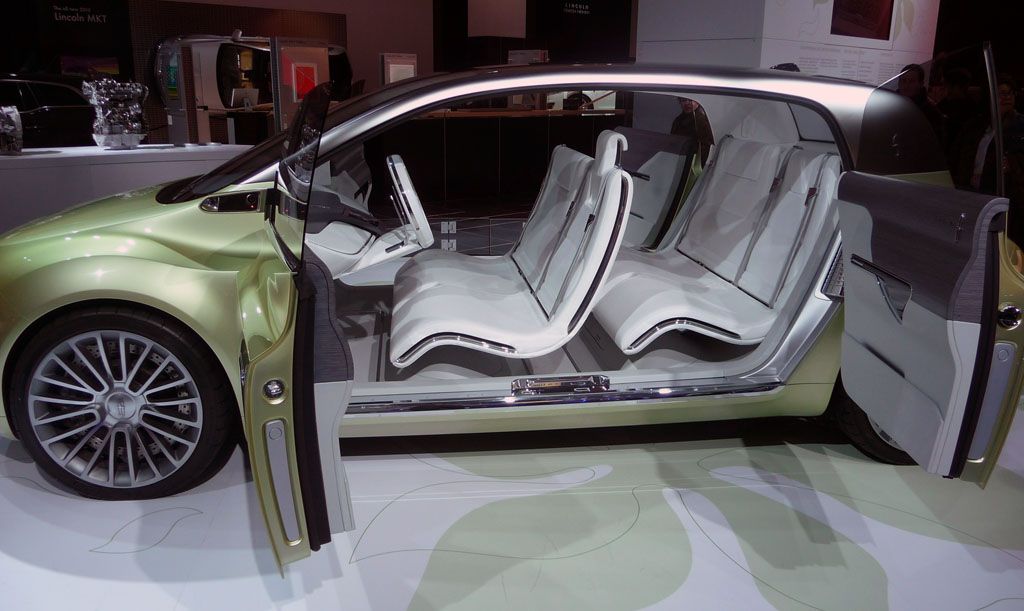
8. **Suicide Doors** With today’s emphasis on safety, a feature named “suicide doors” immediately marks it as a relic. Also known as coach or rear – hinged doors, these intriguing portals originated from horse – drawn carriages before being adopted by classic cars. Their unique mechanism opened in the opposite direction to conventional front doors, creating a wide aperture. This design was initially acclaimed for its dramatic flair, providing passengers with unparalleled elegance when entering or exiting. While visually striking, the ominous name originated from a significant safety flaw: aerodynamic drag could violently force them open in a moving vehicle, potentially causing passengers to be ejected. This inherent danger, along with their appeal to 1930s mobsters for the swift expulsion of passengers, contributed to their decline.
Beyond safety considerations, the inconvenience of having to lean forward to shut them, coupled with manufacturing complexities, led to their discontinuation. While some modern luxury models incorporate them with advanced safety latches, this unconventional classic car feature underscores the constant balance in automotive design between aesthetics and safety.
Read more about: Inside Jordan Spieth’s Curated Garage: A Deep Dive into the Golfer’s Luxurious Yet Practical Car Collection and Dallas Estate
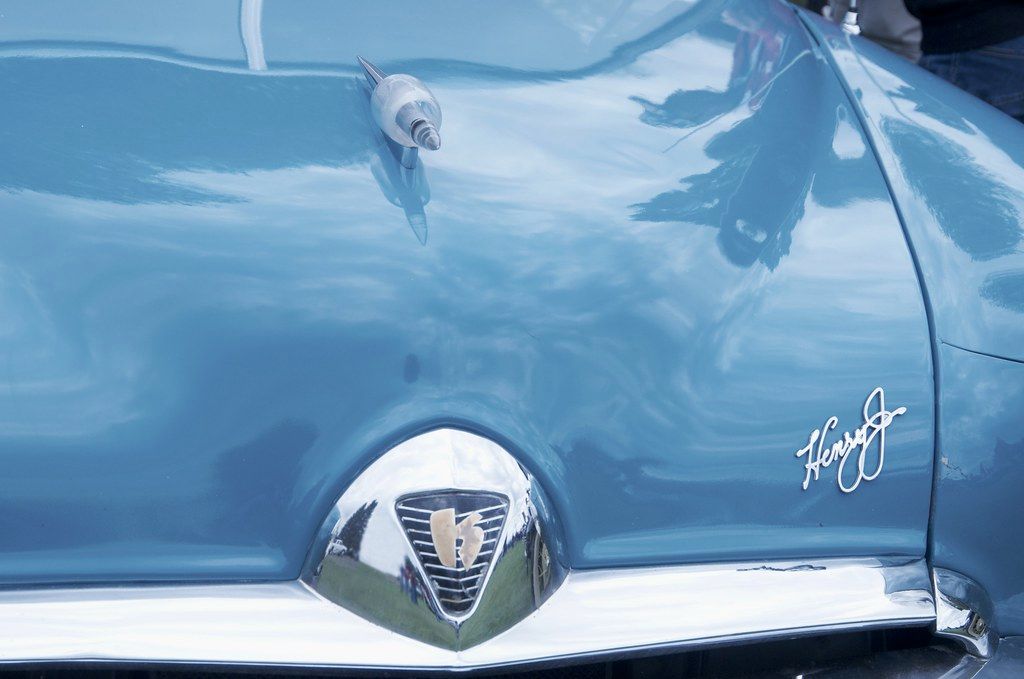
9. **Hood Ornaments** These small, intricate statuettes, proudly perched at the front of a car’s hood, served as more than mere decoration. Hood ornaments, also known as mascots, resembled miniature trophies, instantly imparting bespoke artistry and a sense of luxury. The concept can be traced back to ancient seafaring vessels, which featured sculptures at their helms; Tutankhamun’s sun-crested falcon on his chariot serves as an early example. By the 1920s, they also functioned as radiator caps, becoming a standard and visible feature. Sculptors meticulously crafted detailed miniature figurines from chrome, glass, or precious metals, drawing inspiration from animals and brand logos. Iconic examples include the Rolls-Royce “Spirit of Ecstasy,” Bentley’s flying “B,” and Jaguar’s leaping jaguar, transforming the car’s front into a veritable work of art.
However, the era of the hood ornament waned owing to evolving safety regulations. These protruding metal decorations presented a significant injury risk to pedestrians in the event of collisions. Concerns regarding theft and aerodynamic drag, which could cause the hood to pop open, further determined their fate. Their removal from mainstream vehicles by the 1970s marked a pivotal shift in automotive design from ornate decoration toward functionality and minimalism, cementing them as a cherished symbol of an opulent past.
Read more about: Serving Up Style: Discover the Jaw-Dropping Cars in Novak Djokovic’s Extravagant Collection
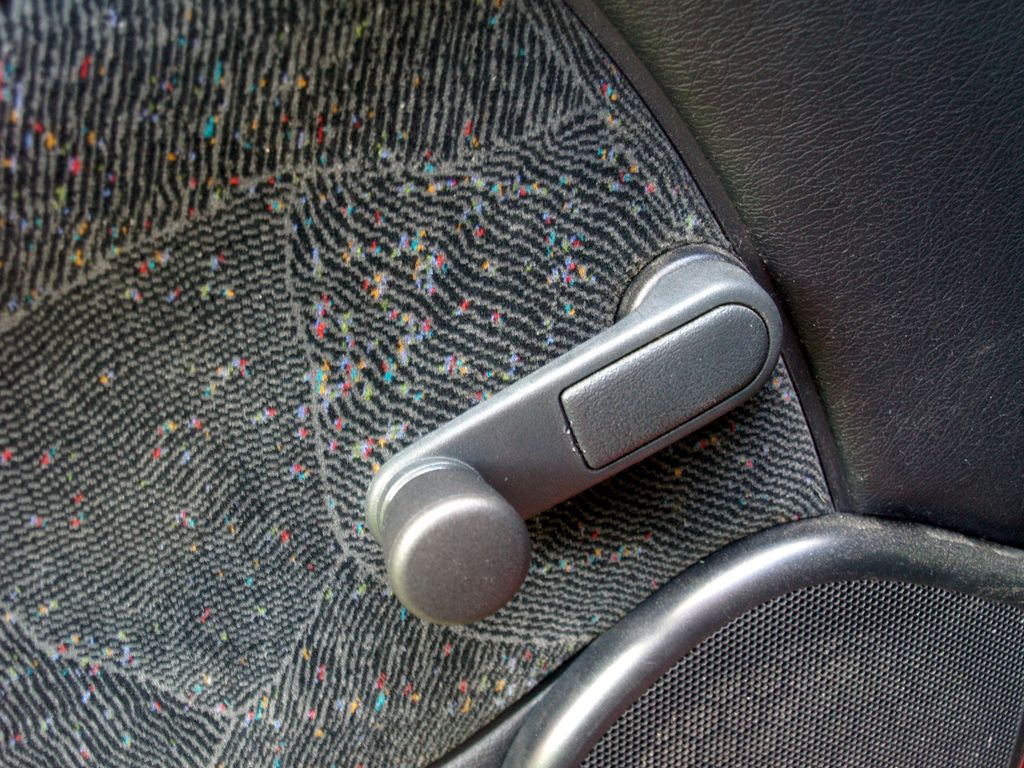
10. **Manual Window Cranks** In an era of seamless automation, manually operating a car window by turning a crank appears anachronistic. Yet, for decades, the manual window crank was prevalent and represented a significant upgrade from earlier windows that merely folded down. This reliable mechanism, which required only a simple gear and rotary system within the door panel, swiftly became a global standard. This unmediated experience fostered a subtle yet engaging relationship between humans and machines, which is largely absent in today’s electronic interfaces.
It was not until the mid-1990s that these sturdy, physically interactive mechanisms were gradually phased out, as powered windows rapidly emerged as the prevailing norm. The advent of electric motors and push – button controls eliminated the need for manual effort and additional handles, offering unparalleled convenience. While manual window cranks are now virtually non – existent in modern vehicles, they serve as a reminder of a time when automotive features prioritized durable, mechanical simplicity and direct user interaction.
Read more about: Unveiling Automotive Legends: The 15 Most Expensive and Rarest Cars in the World (2025 Edition)
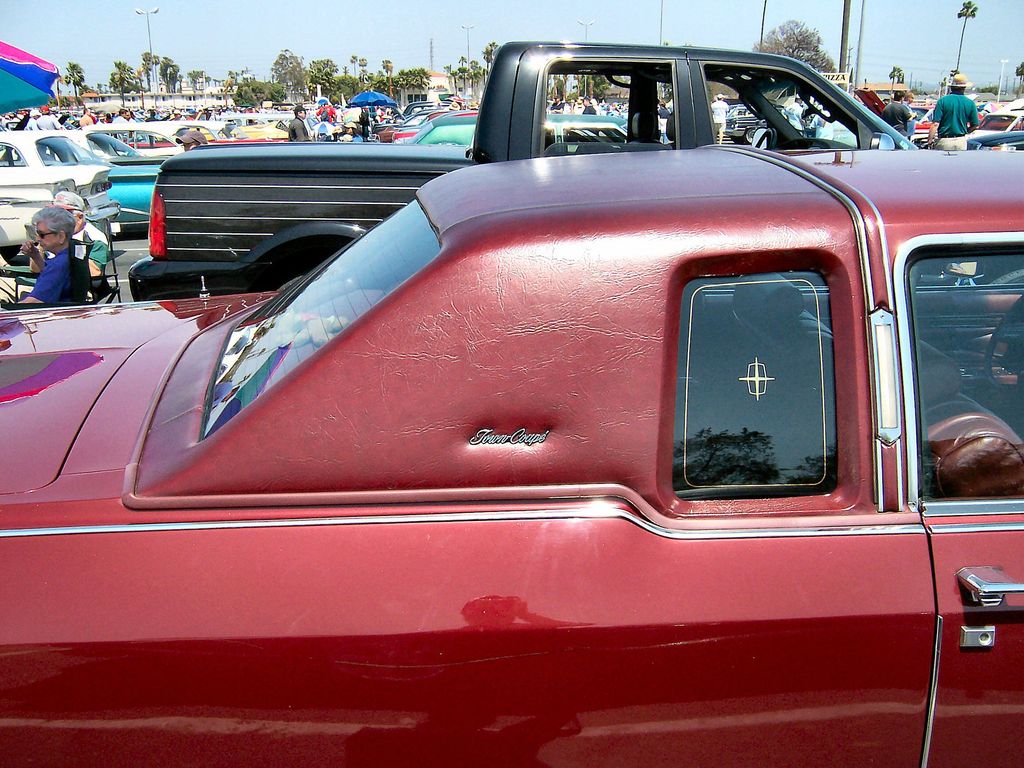
11. **Vinyl Roofs** Imagine a car adorned with a synthetic hairpiece, a styling trend that emulates a convertible without compromising structural integrity. This innovation was the vinyl roof, which emerged in the 1920s due to manufacturers’ aspiration for a prestigious open – top appearance at a lower cost. The vinyl, often textured to resemble fabric, enveloped the roof, creating an impression of a soft – top. For decades, especially from the 1960s to the 1970s, vinyl roofs were extremely popular, regarded as a sophisticated accessory that enhanced curb appeal with a distinctive two – tone look. This reflected a design era that prioritized visual embellishment and perceived luxury.
However, their fatal flaw lay in trapping moisture against the metal roof, thus creating an ideal breeding ground for rust. By the 1980s, consumer tastes shifted towards streamlined designs. More durable paint finishes and functional sunroofs became accessible, leading to the gradual phase – out of these high – maintenance coverings. Today’s panoramic glass roofs offer the desired openness, rendering vinyl roofs an interesting yet problematic footnote in the history of automotive styling.
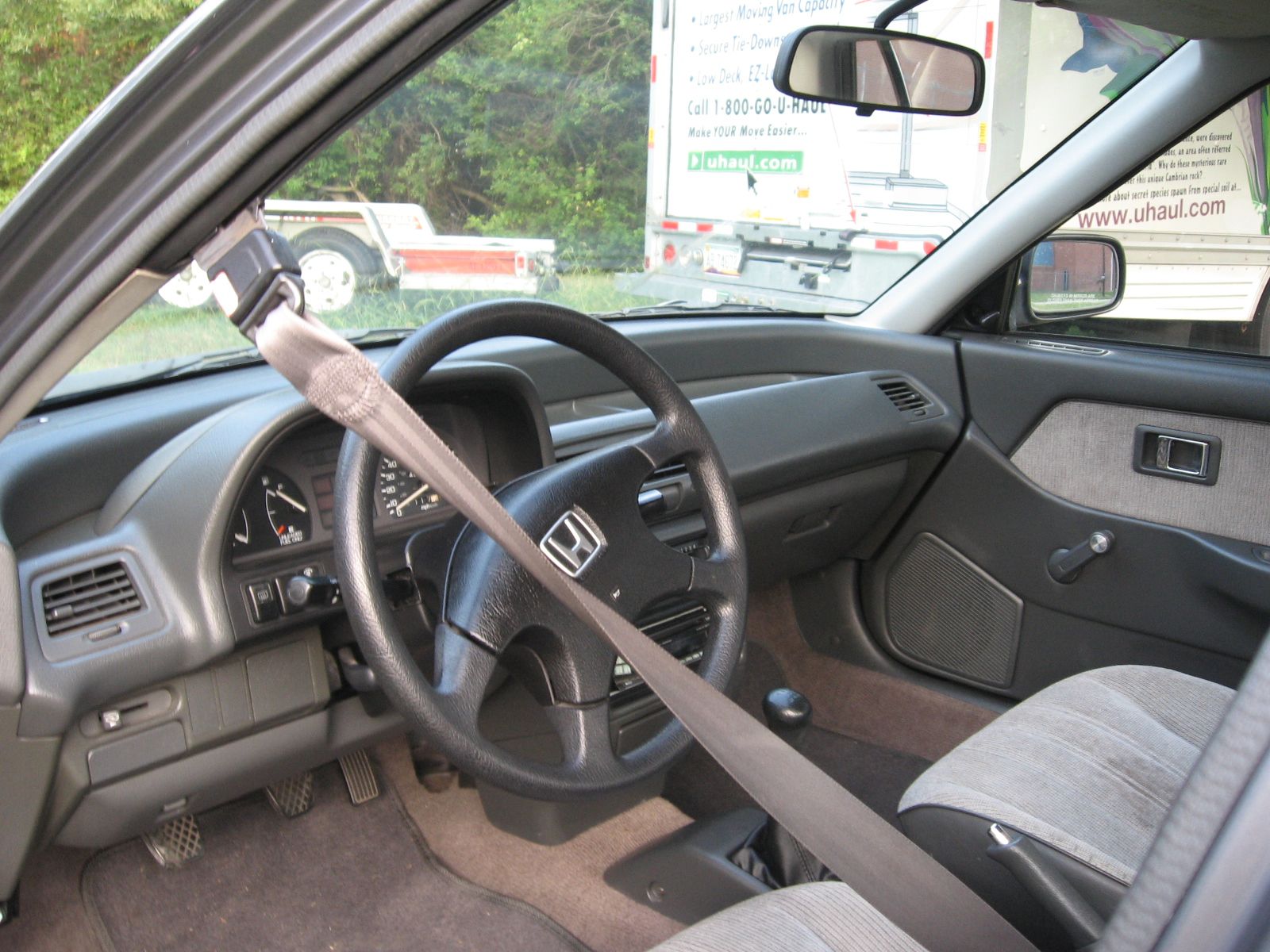
12. **Automatic Seat Belts** Automatic seat belts represented a fascinating, albeit flawed, endeavor to engineer driver safety compliance. Conceived prior to airbags, these motorized restraints provided a dramatic safety experience. Upon entry, the belts smoothly slid across the occupant’s torso, with the aim of ensuring restraint without the need for conscious action. While innovative in their objective, their fundamental flaw was immediately apparent: many early systems secured only the upper body, leaving the lap unprotected—a critical oversight in frontal collisions. Drivers frequently ducked under the shoulder portion, thereby rendering the system ineffective, highlighting the challenge of integrating safety features with human behavior.
Practical deficiencies and rapid advancements in other technologies ultimately led to the retirement of these automated devices. More effective, multi-point manual seat belt designs and mandatory airbags offered superior protection. Automatic seat belts remain a compelling case study of how engineering efforts, aimed at accommodating human tendencies, can inadvertently create more problems than they solve, demonstrating imperfect innovation in automotive safety.
Read more about: Serving Up Style: Discover the Jaw-Dropping Cars in Novak Djokovic’s Extravagant Collection
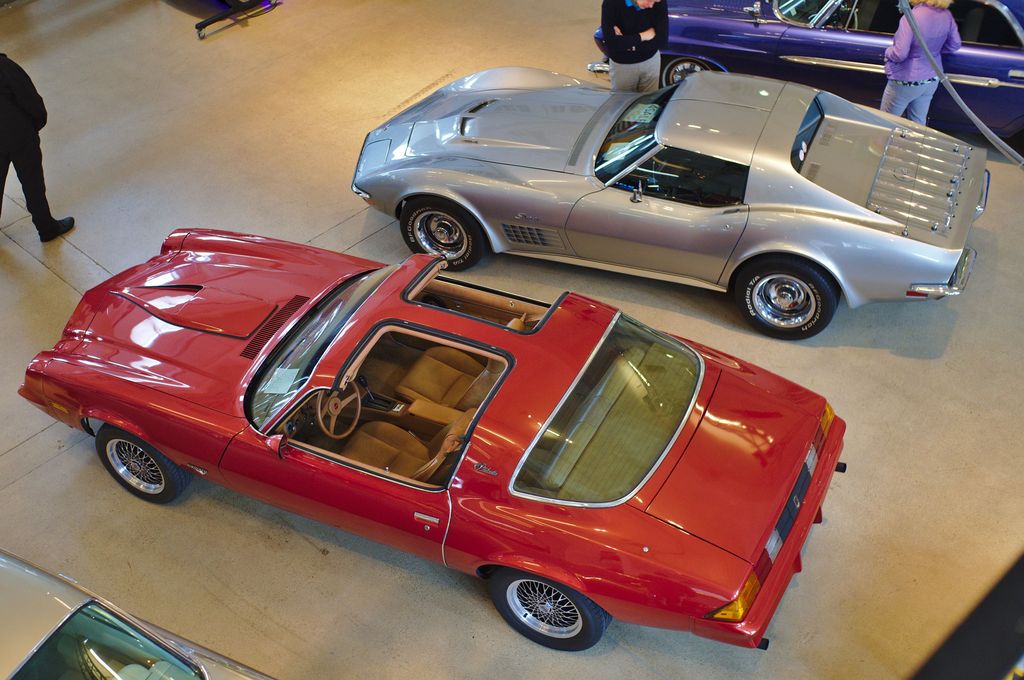
13. **T-Tops** T-tops emerged as the ultimate compromise for motorists, striking a balance between the exhilaration of a true convertible and the structural integrity of a fixed-roof coupe. These ingeniously designed, individually removable roof panels, separated by a central structural beam, formed the namesake “T” shape. This innovative design provided an enticing glimpse of open-air excitement without compromising vehicle rigidity. Popularized by the iconic 1968 Corvette, T-tops rapidly spread across sporty models such as the Chevrolet Camaro and Pontiac Firebird, symbolizing coolness and offering a unique combination of style and practicality.
Despite their popularity, T-tops had persistent problems: chronic water leakage and significant wind noise when the panels were removed. The bulky panels necessitated dedicated storage, thereby limiting cargo capacity. As automotive engineering progressed, leading to the development of sophisticated, fully retractable hardtops, T-tops became an obsolete, albeit fondly remembered, intermediate solution.
Car Model Information: 2004 Chevrolet Corvette Base
Name: Chevrolet Corvette
Caption: 2021 Chevrolet Corvette C8
Manufacturer: Chevrolet
Production: 1953–present
ModelYears: bulleted list
Assembly: bulleted list
Class: Sports car
BodyStyle: coupé
Layout: Front-engine, rear-wheel-drive layout,Rear mid-engine, rear-wheel-drive layout
Categories: 1950s cars, 1960s cars, 1970s cars, 1980s cars, 1990s cars
Summary: The Chevrolet Corvette is a line of American two-door, two-seater sports cars manufactured and marketed by General Motors under the Chevrolet marque since 1953. Throughout eight generations, indicated sequentially as C1 to C8, the Corvette is noted for its performance, distinctive styling, lightweight fiberglass or composite bodywork, and competitive pricing. The Corvette has had domestic mass-produced two-seater competitors fielded by American Motors, Ford, and Chrysler; it is the only one continuously produced by a United States auto manufacturer. It serves as Chevrolet’s halo car.
In 1953, GM executives accepted a suggestion by Myron Scott, then the assistant director of the Public Relations department, to name the company’s new sports car after the corvette, a small, maneuverable warship. Initially, a relatively modest, lightweight 6‑cylinder convertible, subsequent introductions of V8 engines, competitive chassis innovations, and rear mid-engined layout have gradually moved the Corvette upmarket into the supercar class. In 1963, the second generation was introduced in coupe and convertible styles. The first three Corvette generations (1953–1982) employed body-on-frame construction, and since the C4 generation, introduced in 1983 as an early 1984 model, Corvettes have used GM’s unibody Y‑body platform. All Corvettes used front mid-engine configuration for seven generations, through 2019, and transitioned to a rear mid-engined layout with the C8 generation.
Initially manufactured in Flint, Michigan, and St. Louis, Missouri, the Corvette has been produced in Bowling Green, Kentucky, since 1981, which is also the location of the National Corvette Museum. The Corvette has become widely known as “America’s Sports Car.” Automotive News wrote that after being featured in the early 1960s television show Route 66, “the Corvette became synonymous with freedom and adventure,” ultimately becoming both “the most successful concept car in history and the most popular sports car in history.”
Get more information about: Chevrolet Corvette
Buying a high-performing used car >>>
Brand: Chevrolet Model: Corvette
Price: $23,892 Mileage: 29,579 mi.
Read more about: Beyond the Legends: 11 Obscure Collector Cars Even the Hardcore Enthusiasts Might Have Missed
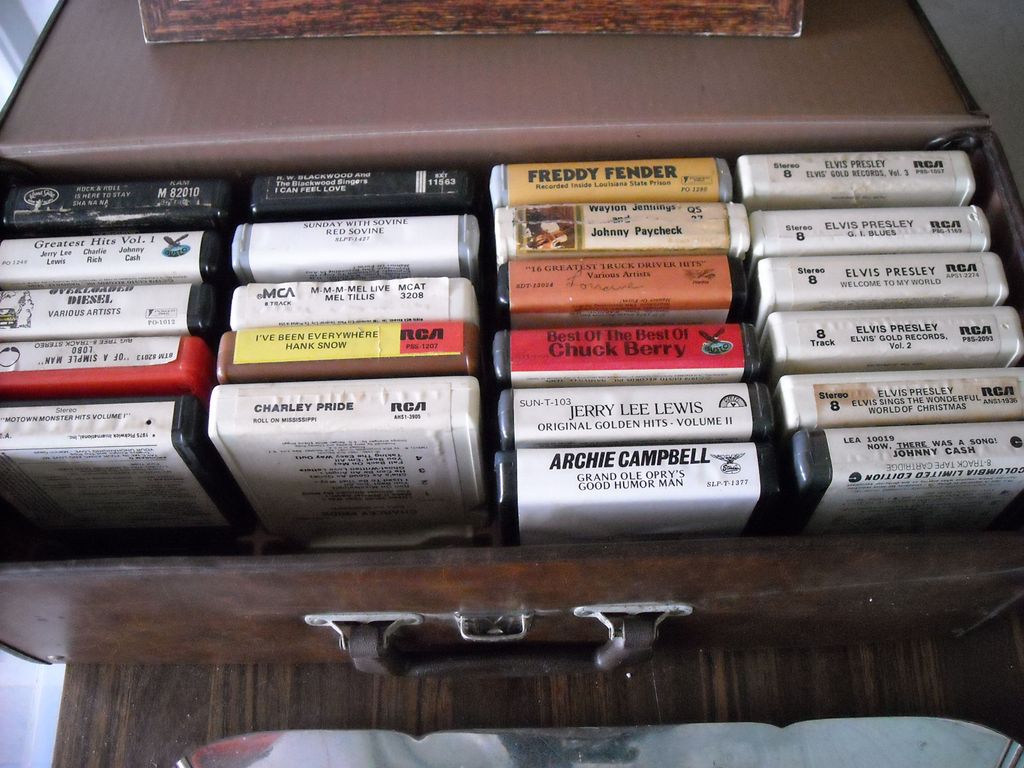
14. **Eight Track Tapes** Imagine introducing personalized soundtracks to road trips, long before the advent of digital playlists. That’s precisely what eight-track tapes promised when they made a dramatic entrance onto the scene in 1964, introduced by Bill Lear. These innovative cartridges provided 80 minutes of uninterrupted music, divided into four programs. In an era when radio DJs dictated the music, the eight-track represented an unprecedented leap forward in in-car entertainment.
Yet, their fatal design flaws were frustratingly persistent. Tapes were notorious for jamming, transforming a smooth ride into one filled with distorted sound or silence. Sound quality deteriorated rapidly, losing fidelity faster than the changing of social media trends. Most infuriatingly, the format’s inability to rewind made it impossible to locate specific songs, often necessitating fast-forwarding through entire programs. Unsurprisingly, these primitive mobile jukeboxes were swiftly made obsolete by compact cassettes, which offered superior sound quality, a smaller form factor, and the crucial rewind/fast-forward functions. Today’s streaming services provide instant, on-demand access to any song, rendering eight-track players as antiquated as stone tablets. They stand as monuments to an era when ambition bravely outstripped practicality, paving the way for today’s rich in-car entertainment systems.
Our journey through these classic car features underscores a compelling truth about automotive evolution: it is a dynamic interplay among visionary design, practical application, and society’s ever-shifting demands. While some features faded due to safety concerns or technological superiority, others simply succumbed to changing tastes or the relentless pursuit of convenience. Each forgotten innovation, from the elegant simplicity of a manual crank to the bold statement of a vinyl roof, offers a unique window into a past when cars were not just modes of transport but canvases for character, ingenuity, and sometimes, charming eccentricities. Rediscovering these elements is not just an act of nostalgia; it is an appreciation for the intricate story of how we transitioned from rudimentary machines to the advanced vehicles of today, often sacrificing a bit of tactile engagement and distinct personality along the way. Perhaps, as trends always do, some of these charming quirks might inspire future designs, reminding us that sometimes, the best innovations are those we once thought we had forgotten.



